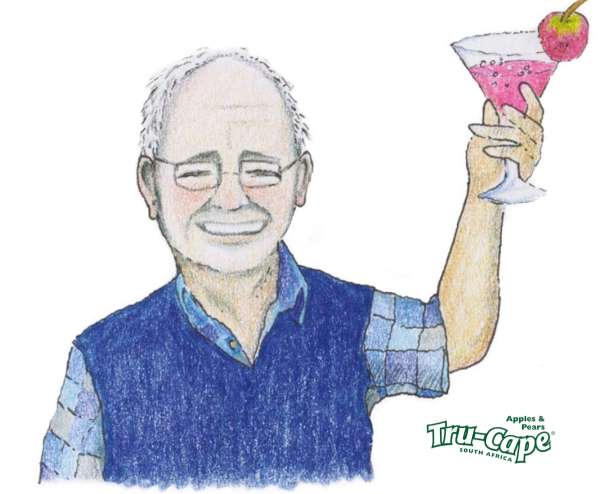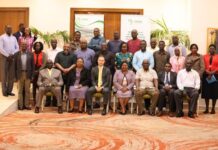
As tributes pour in to the life of John Cripps, a preeminent apple breeder responsible for two of the most successful trademarked varieties, Pink Lady® and JOYA®, Tru-Cape Fruit Marketing’s New Varietal Expert, Buks Nel, paused for some personal recollections.
“I had the privilege of meeting John Cripps in early 1992 in Australia,” says Nel. “He was a humble man, in spite of having bred what, to my mind, is the most exciting and successful apple, Cripps Pink, that the world has ever seen,” says Nel, himself a fruit-industry veteran and holder of Plant Breeder’s Rights for Bigbucks, the fruit of which is FLASH GALA ™ apples and Shortie . He has also shared in a number of important discoveries among them Fuji Royal and spur-typed Fuji mutation currently being developed in Italy.
“John Cripps gently commented that he preferred his other apple ‘child’ Cripps Red, because the horizontal growth of its branches cut out the need for training the young trees. He was an unusual breeder who saw his trees as a whole and not just as a bearer of fruit.”
According to Nel, Cripps took the Pink Lady® trade name from his favourite novel, Nicholas Monserrat’s The Cruel Sea”, where the hero sips on a Pink Lady cocktail. As John said, “It’s a fitting name for an apple with such a beautiful blush!”
Nel shared this biographical extract from his book, The Newcomers and Their Friends, co-authored with Tru-Cape’s Quality Manager, Henk Griessel. “John Ernest Lane Cripps was born on 9 April 1927 in Steyning, Sussex, England. He graduated from Reading University as a Horticulturist, and emigrated to Perth, Western Australia.
The job he got at the Western Australian Department of Agriculture led him to become a specialist Horticulturist in 1959. This entailed developing rootstocks as well as working on strategies to optimise horticultural production in Western Australia.
In 1973, John crossed Golden Delicious and Lady Williams at the Department of Agriculture’s Stoneville Research Station in Western Australia. This resulted in a seedling called Cripps Pink which was planted out the following year.
In 1981 the seedling was identified as having ‘potential for further observation and assessment’, and in 1984 the first trials with Cripps Pink were arranged in the South-West of Western Australia. The apple was late-maturing, i.e. later than Granny Smith. What made it so special was its absolutely unique pink colour. It was arguably the first true pink apple of the 20th century. The fruit was crisp, with an excellent sugar/acid balance, and it stored well. The commercial plantings in the Manjimup and Bunbury areas proved to be very successful, with stunning pink colour development.
Today, 4.1 million cartons Cripps Pink and Pink Lady® are being exported from South Africa annually.”
Liza Matthews of TopFruit said, “Cripps Pink and its mutants has had a remarkable history since its introduction into South Africa in 1994. Currently the fourth most planted variety with 2349ha and the third most exported having recently overtaken Granny Smith. Cripps Red and its mutants, despite being very much in the shade of its more famous sibling, is also a major variety with 1623ha and exporting two million cartons compared to the 2.1 million of the varieties classified as Topred/Starking.”
“John Cripps died on May 10, 2022, at the ripe age of 95. Like the two famous apple he bred, he had had a long storage life. Rest in Peace, John,” Nel ends.








